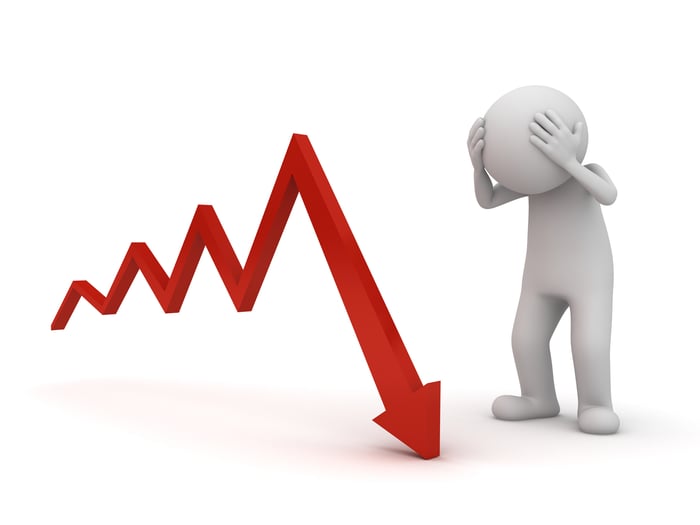In a downward spiral for the last few months, Fastly's (FSLY 1.27%) stock can't seem to catch a break. Despite the raised full-year revenue outlook on strong anticipated demand for the company's content delivery network (CDN) services in the second half of the year, the stock price plunged by roughly 27% following the earnings release on May 5. It's now trading more than 60% below its year-ago all-time high.
Here's why the market's enthusiasm about Fastly's high-growth story appears to be fading away.
Fastly posted underwhelming short-term results
With its consumption-based model, Fastly profited from the boost in usage of online services generated by coronavirus-induced lockdown measures over the last several quarters. And with some of these new habits becoming permanent, management anticipates strong revenue growth this year. As a result, last week it raised its full-year revenue outlook by $5 million to a range of $380 million to $390 million, which corresponds to a 32% year-over-year growth at the midpoint.

Image source: Getty Images.
Yet short-term results don't match that optimism, which worried investors.
First-quarter results were just as anticipated. Revenue increased 35% year over year to $85 million, in line with the forecasted revenue range of $83 million to $86 million. And non-GAAP (adjusted) net losses of $14 million met the low end of guidance.
Looking forward, the second-quarter forecast is even less exciting, with anticipated revenue in the range of $84 million to $87 million, according to management. Excluding the extra contribution from the cybersecurity specialist Signal Sciences acquired last year, that corresponds to a flat to low-single-digit percentage growth. Granted, if you also exclude the contribution from Chinese company-owned social network TikTok, which reduced its business with Fastly for political reasons, year-over-year revenue growth should slightly exceed 20%.
But even with these adjustments, and taking into account the tough base comparison with the surge in traffic volume last year because of the lockdowns, that level of revenue growth remains disappointing. Indeed, the stock's lofty price-to-sales ratio above 30 for the most part of the second half of last year suggests investors had a brighter future in mind for the company.
FSLY PS Ratio data by YCharts
A brighter future for Fastly?
So the raised full-year revenue outlook indicates management expects a strong recovery during the second half of the year, based on the feedback of existing large customers.
However, besides the uncertainties around the strength of such demand, the company will be facing important challenges leveraging its new edge computing and cybersecurity offerings to overcome its recent weakness.
For instance, like several CDN players, Fastly developed edge computing capabilities. Its new platform Compute@Edge allows customers to create dynamic online services hosted closer to users for better performance.
But the company took extra time to optimize Compute@Edge with its own technology and compete on performance against the programmable edge computing platforms sold by Cloudflare (NET 0.75%) and Akamai Technology (AKAM 0.04%) for the last few years. In addition, the solution involves a steeper learning curve, which could further slow down its adoption. Thus, revenue from Compute@Edge should become material only by 2022, according to management. In any case, investors should keep a close eye on the success of that product, as it should represent an important revenue growth engine over the next many years.
Also, Fastly acquired Signal Sciences last year to augment its core offerings with cybersecurity capabilities. Similarly, the company must provide strong execution to catch up in this area against the broader and more mature security offerings of its peers, such as Cloudflare and Akamai. And in addition to the technical integration risks, it must find an attractive marketing proposition to mix its consumption-based model with Signal Science's subscription-based offering without confusing customers.
Fastly investors are still demanding expectations
So because of the company's underwhelming results and second-quarter guidance, the stock price plunged. In addition, after five years as CFO, Adriel Lares announced he will leave Fastly, without providing the reasons for his decision. That surely didn't boost investors' confidence.
Yet Fastly hasn't become a cheap tech stock, given its still high price-to-sales ratio of 14.7.
That means the market isn't expecting phenomenal performance over the long term anymore, but it's still pricing in strong execution going forward with the successful deployments of the company's new edge computing and cybersecurity capabilities.
Thus, investors should remain prudent and consider staying on the sidelines before tangible results from the company's new cybersecurity and edge computing offerings materialize over the next several quarters.






